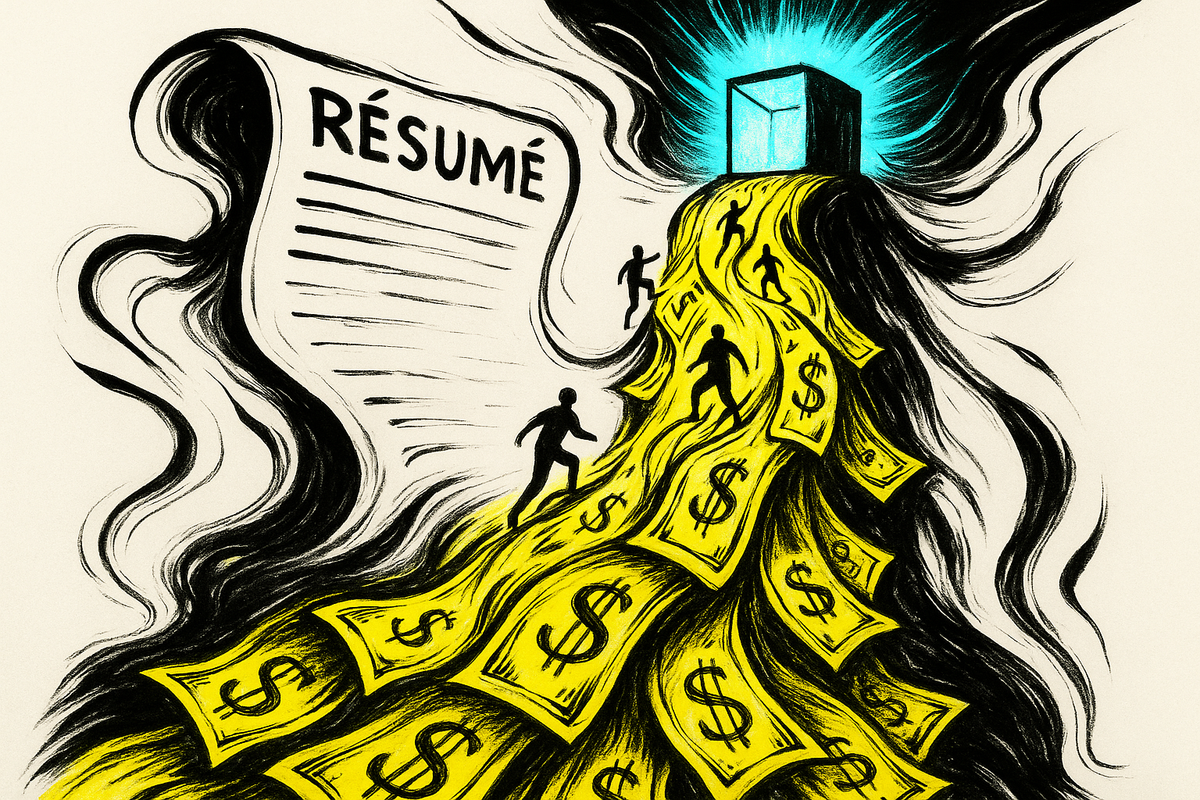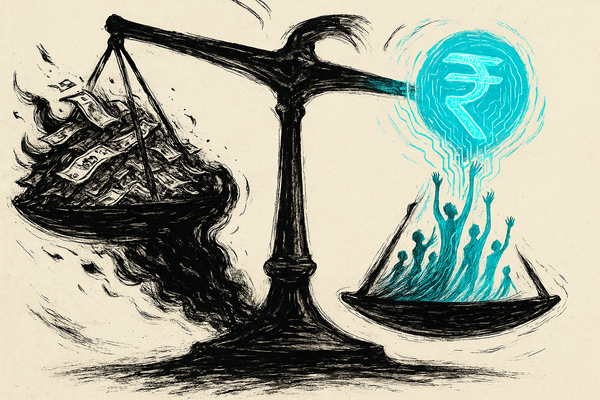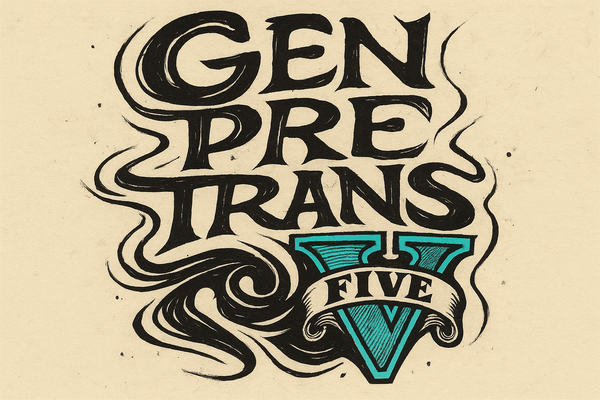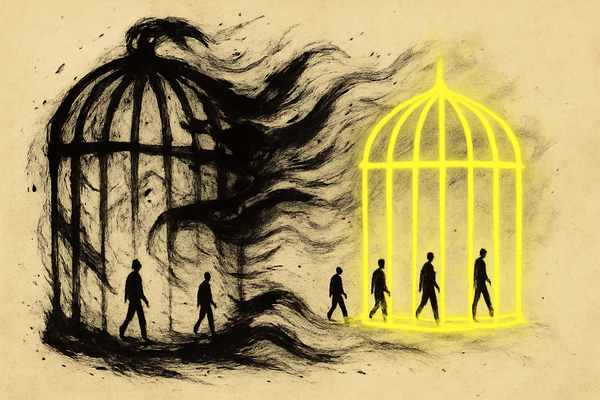ImaginEconomy Daily #12
Former OpenAI executives raise $2B with no product, open-source audio models challenge Silicon Valley, and GPT-5 promises to unify everything under one model to rule them all.

Mira Murati's Thinking Machines Raises $2B at $12B Valuation
Former OpenAI CTO Mira Murati's startup Thinking Machines Lab has landed one of the largest seed rounds in history—$2 billion at a $12 billion valuation—despite having no revenue, no products, and no public roadmap. The round was led by Andreessen Horowitz and Nvidia, with two-thirds of the team comprised of former OpenAI employees who followed Murati after her October departure.
ImaginEconomy Impact: The $12B blank check reveals venture capital's new reality: credentials trump products. When your resume includes building GPT-4, investors bet on bombastic potential, not petty proof. For agencies and brands watching from the sidelines, this is a brutal dynamic. Seriously AI capable talent is being hoovered up by startups and big tech with unlimited budgets and low pressure to ship in short order. Even the best companies outside core AI have zero ability to compete on compensation, resources and long-term vision. Building early partnerships with and buying services from these companies is the only way.
Source: TechCrunch on Thinking Machines funding
Cognition Scoops Up Windsurf After Google's Selective Poaching
Cognition acquired Windsurf's remaining 250-person team and $82 million ARR business after Google's unusual $2.4 billion reverse-acquihire cherry-picked only the leadership, leaving employees without payouts. The acquisition gives Cognition both AI coding agents and IDE capabilities to compete with Cursor's $500 million ARR. As a bonus, the deal restored Windsurf's access to Claude models that Anthropic had cut off amid rumors of an OpenAI acquisition.
ImaginEconomy Impact: Google just invented a new M&A playbook: buy the generals, abandon the army. This surgical talent extraction leaves behind operational businesses ripe for acquisition by hungrier competitors. For the creative industry, this signals a shift in how big tech views acquisitions. They don't want your company; they want your architects. The winners will be those who can either protect their talent with golden handcuffs or flip their whole operation before the apex predators come circling.
Source: TechCrunch on Cognition Windsurf acquisition
Mistral's Voxtral: Open-Source Audio AI Disrupts Silicon Valley
Mistral released Voxtral, its first open-source audio model suite featuring a 24B parameter model for large-scale use and a 3B variant for edge deployment. The French AI company continues its strategy of democratizing frontier AI capabilities, challenging Silicon Valley's closed-source dominance with models that anyone can download, modify, and deploy locally.
ImaginEconomy Impact: While OpenAI delays its open model and Google guards its audio tech, Mistral just handed the keys to the kingdom to anyone with a GPU. This isn't charity but distribution power. For agencies and brands tired of API costs and platform dependencies, Voxtral offers liberation: build custom voice experiences without sending data to Silicon Valley or paying per request. The strategic play is clear: while competitors monetize through scarcity, Mistral builds an ecosystem through abundance. Smart brands will use this gift to create proprietary voice experiences that big tech can't revoke, throttle, or price-hike.
Source: Mistral Voxtral announcement
GPT-5: The Unification Engine Coming This Summer
OpenAI confirmed GPT-5 will unify the reasoning capabilities of its o-series models with the multimodal prowess of GPT-4o, creating what Head of Developer Experience Romain Huet calls "the best of two worlds." CEO Sam Altman maintains a "summer" timeline, though insiders suggest mid-to-late 2025 is more realistic. The model promises to eliminate the current complexity of choosing between specialized models for different tasks.
ImaginEconomy Impact: The model fragmentation nightmare might be ending. No more juggling between o3 for reasoning and GPT-4o for general or multimodal tasks. For agencies drowning in model selection paralysis, GPT-5 promises simplicity: one model to rule them all. But unification comes with concentration and cost. When one model does everything, cost optimization becomes tricky and switching costs can skyrocket as vendor lock-in deepens. Smart players build model-agnostic workflows that can wield unified best in class pay-for-use systems as well as dedicated, public or self-hosted models for specialized tasks and needs. Mastering orchestration delivers even in the age of unification.
Source: BleepingComputer on GPT-5 unification
OpenAI Delays Open Model Release Indefinitely
OpenAI CEO Sam Altman announced another delay to the company's highly anticipated open model, pushing the release back indefinitely for additional safety testing. "Once weights are out, they can't be pulled back," Altman explained, highlighting the irreversible nature of open-source AI releases. The model was expected to bring o-series reasoning capabilities to developers who could run it locally.
ImaginEconomy Impact: OpenAI's cold feet reveal the central paradox of AI democratization: everyone wants it until it happens. The indefinite delay isn't about safety; it's about control. Once capable models run locally, API revenues can evaporate and competitive moats crumble. For brands betting on OpenAI's ecosystem, this is a warning shot. The company that promised to democratize AI for the benefit of humanity is having second thoughts. Meanwhile, Mistral ships open models like clockwork. Building your future on platforms that can't decide if they want to be open or closed might be perilous and it's up to you to hedge.
Source: TechCrunch on OpenAI open model delay
H&M's Digital Twin Models Preserve Rights While Scaling Fashion
H&M expanded its AI initiatives by creating digital twins of 30 real-world models for use across ads, e-commerce, and social media. The ethical approach ensures original models retain image rights and receive full compensation while allowing H&M to generate unlimited variations without repeated photoshoots.
ImaginEconomy Impact: H&M just solved fashion's AI ethics dilemma: don't replace humans, but make them infinitely scalable. This hybrid model respects talent while embracing efficiency. Models get paid without showing up. Brands get content without photo shoots. Everyone wins. For now. But the precedent is not without risk. Today's "digital twins with compensation" becomes tomorrow's "synthetic models without humans." Smart players should negotiate likeness rights now, while humans still have power. The window between "AI assists humans" and "AI replaces humans" is shorter than you think.
Source: Digital Agency Network on AI campaigns
Google's AI Overviews Favor Its Own Ecosystem
New research reveals that 43% of Google's AI Overviews point back to Google-owned properties, raising questions about search neutrality as AI reshapes discovery. Wikipedia dominates citations at 16.3%, while YouTube appears in 9.5% of AI Overview sources, creating a self-referential loop that favors Google's content ecosystem.
ImaginEconomy Impact: There's no reason the search monopoly can't become an AI monopoly. When nearly half of AI-generated answers cite Google's own properties, we're not getting smarter search; we're getting Excel's circular reference at scale. For brands dependent on organic discovery, this is existential. Your SEO strategy needs to account for an AI that prefers citing its corporate parents and siblings. The only defense is becoming undeniably authoritative in your niche. If Google's AI won't cite you, make sure every other AI will. Build for the open web, but know the walled gardens.
Source: Ahrefs AI marketing statistics
AI Marketing Investment Hits $82 Billion as 74% of Marketers Call It Critical
Global spending on AI-driven marketing technology will reach $82 billion in 2025, up from $67 billion the previous year. Meanwhile, 74% of marketers now say AI is either "critically important" or "very important." This is an 8-point jump from 2024. Companies leveraging AI in marketing report 20-30% higher campaign ROI compared to traditional methods.
ImaginEconomy Impact: The $82 billion gold rush is on, but most of it might be spent on tools that automate much of what shouldn't exist in the first place. Higher ROI sounds impressive until you realize the baseline might be campaigns that have no right to exist in the first place. The real opportunity isn't in blindly spending more on AI tools; it's in using AI to question why you're running your campaigns at all. The brands seeing the biggest lifts aren't just optimizing. They're reimagining what to put where and why. In a world where everyone has the same tools, competitive advantage comes from asking better questions.
Source: Digital Agency Network on AI marketing stats
Bottom Line: The Credential Economy
Today's stories reveal an industry where pedigree trumps product, promises trump proof, and potential trumps profit. A former OpenAI executive raises billions without a demo. Tech giants perform surgical talent extractions. Open source becomes geopolitical chess. And marketing budgets chase AI dreams while struggling with implementation reality.
The connecting thread? We've entered the credential economy, where your last job matters more than your next product. Where unified models promise simplicity while creating dependency. Where open source becomes a weapon against incumbents who can't decide if they're platforms or elitist priesthoods.
The winners won't be those with the best credentials or the biggest budgets. They'll be those who understand that in a world racing toward artificial general intelligence, the scarcest resource isn't compute or capital; it's clarity about what problems actually need solving.
The future belongs to those who can navigate the gap between AI's promises and reality, building value in the space between what's possible and what's profitable.
ImaginEconomy Daily Newsletter is curated for brand, business and marketing strategists, creatives, and leaders navigating the intersection of technology and human experience.




